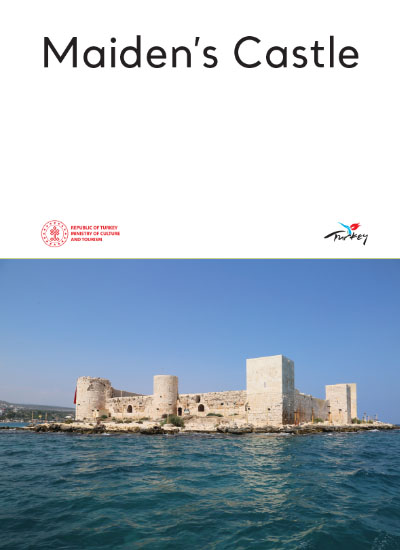The ancient city of Korykos is 65 km from Mersin and 25 km from Silifke. It is situated on the slopes of the mountain where it reaches the coast. As the mountain approaches the sea, two small bays are formed. The city is surrounded by a natural harbour where it has always been settled in all periods. The remains of the ancient city are spread over an area of 113.4 hectares, extending to the northeast of the modern settlement of Kızkalesi, including the full extent of the necropolis valley to the west and 2 km along the coast to the east. According to Heredot, the city was founded by a Cyprian prince, Korykos. The name of the city was first recognised on coins at the beginning of the 1st century BC, when they proclaimed independence after the political unrest following the death of the Seleucid king Anthiokos IV. The first records of the city date back to the Hittite period, but the most important finds are from the Hellenistic period. The first city walls are remains from this period. In the Roman period the city was extended to the east and new walls were built in the 4th century AD, the time when the city reached its heyday. Another very important face of Korykos is its Christian period. Fourteen churches dating from the 4th to the 7th century A.D. have been preserved in this rather small area. They are located north of the Mersin-Silifke highway, just before entering the centre of Kızkalesi, next to the Roman necropolis. During the Byzantine and Armenian periods, the city retained its importance as a port. The city was again surrounded by walls to protect it from Arab attacks. Pieces of buildings from the Roman period were used as spolia in the construction of this double-row city wall. The water channels built in the Roman period on the line within the Latmos valley were rebuilt and used in the early Byzantine period. The city was then conquered by the Seljuk Turks and the Cilician Armenian Kingdom. The fortress and castle of Korykos was built by the Armenian Kingdom of Cilicia in the 12th century on previous fortifications. The castle took its final form in the 13th century after various additions and alterations. The city was then sold by the Armenians to the Kingdom of Cyprus in the 14th century due to the attacks of the Karaman dynasty. In 1471 it was conquered by the Ottomans and began to lose its importance. The Sea Castle (Kızkalesi / Maiden Castle) on the small island was built on the rocks 200 metres from the shore. The plan was to protect the strategically located cove from enemy attack by building the sea castle as a first checkpoint. The land castle was then built as a supporting defensive structure. The length of the walls is 192 metres, supported by eight towers. The entrance is from the north through a towered gate. There are differences in the plan types of the towers, which is related to the repairs carried out in different periods. The castle was built on flat ground and had a double circular wall covering an almost square area. It was surrounded by a water-filled moat. Access to the castle was via a bridge that could be raised and lowered over the moat, which was also the entrance to the castle. There are several square towers within the walls and three chapels inside the castle, but only the south-eastern one is of Armenian origin, the other two chapels are Byzantine. The apse, northern wall and part of the western wall of the Armenian chapel have been preserved. North of the road from Mersin to Silifke, just before entering the centre of Korykos, there are various types of graves and tombs from the Roman period. Some have the form of temple tombs, reflecting the importance of the person buried, while others are simpler, such as undecorated sarcophagi. These tombs give an idea of the size of the settlement of Korykos. The name of the castle is derived from a myth. According to the myth, a king once consulted a fortune teller to learn the future of his daughter. When he learned that his daughter was destined to die by a snake bite, he built this castle for her protection. One day, he sent a basket of grapes to his daughter, presuming that he had provided her with adequate protection. However, the snake that was concealed within the basket bit and killed the princess.
MERSİN MAIDENS TOWER SEA CASTLE, CASTLE AND BEACH


